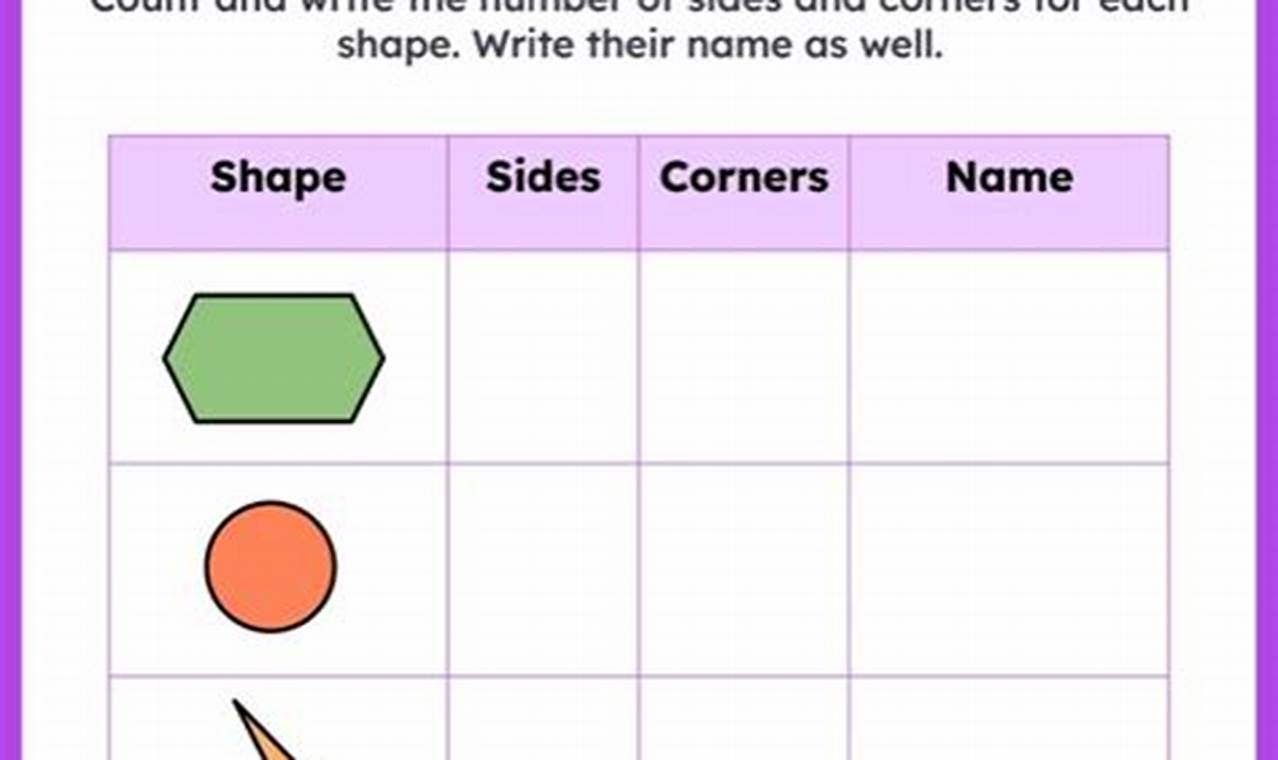Understanding shapes is a fundamental step in a childs early education. Recognizing geometric forms and their properties, such as corners and sides, lays the groundwork for future mathematical concepts and spatial reasoning skills. Worksheets focusing on shape tracing provide an engaging and effective way for children to develop these crucial abilities while enhancing fine motor skills and hand-eye coordination.
The “Shape Tracing for Identifying Corners and Sides” worksheet offers numerous benefits. It aids in the development of visual discrimination, allowing children to differentiate between various shapes and understand their unique attributes. Furthermore, the act of tracing reinforces fine motor skills, hand strength, and hand-eye coordination. By tracing the outlines of shapes, children learn to control their pencil movements, improving their handwriting readiness and overall dexterity. The worksheet also introduces and reinforces the concepts of “corners” and “sides” in a tangible and accessible manner.
This worksheet typically contains a variety of geometric shapes, such as squares, triangles, circles, rectangles, and pentagons. Each shape is presented with a dotted or dashed outline for children to trace. Accompanying each shape are clear labels indicating the “corners” and “sides” of the shape. Some worksheets may also include visual cues, such as colored dots or arrows, to guide the tracing process and emphasize the direction of the lines. The inclusion of illustrations or playful designs around the shapes can further enhance engagement and make learning more enjoyable.
To effectively use the “Shape Tracing for Identifying Corners and Sides” worksheet, start by introducing the shapes to the child. Discuss the names of the shapes and point out their distinguishing features the number of corners and sides. Encourage the child to trace each shape carefully, following the dotted or dashed lines. Offer gentle guidance if needed, but allow the child to develop their control independently. Consider using a thicker pencil or crayon initially, as this can be easier for smaller hands to manage. Breaking the worksheet into smaller sections, completing only a few shapes at a time, can also help maintain focus and prevent fatigue. Praise and encouragement are essential for building confidence and motivation.
To further reinforce shape recognition and understanding, consider supplementing the worksheet with other resources. Kidtraces.com offers a variety of related worksheets that focus on shape identification, coloring, and matching. Incorporating hands-on activities, such as building shapes with blocks or drawing shapes in the sand, can also be beneficial. Educational games and books that feature shapes can provide a fun and interactive learning experience. Daily activities, like identifying shapes in the environment, can help children apply their knowledge in real-world contexts.
In conclusion, the “Shape Tracing for Identifying Corners and Sides” worksheet is a valuable tool for fostering early mathematical skills, fine motor development, and visual discrimination. By providing a structured and engaging learning experience, this worksheet empowers children to confidently explore the world of shapes. Download the worksheet today from Kidtraces.com and unlock a world of learning opportunities. Explore more free worksheets on Kidtraces.com to support your child’s continuous growth and skill development.
